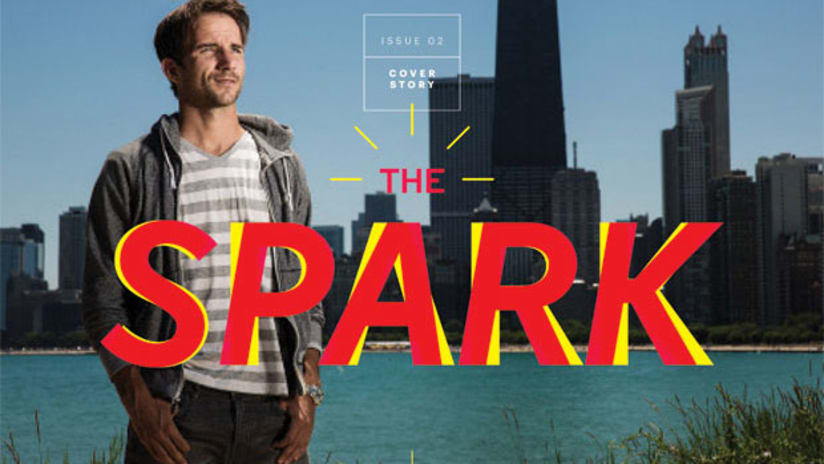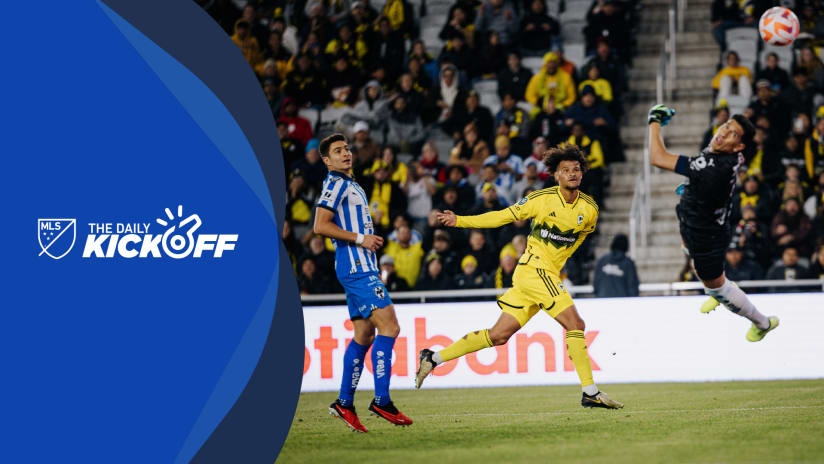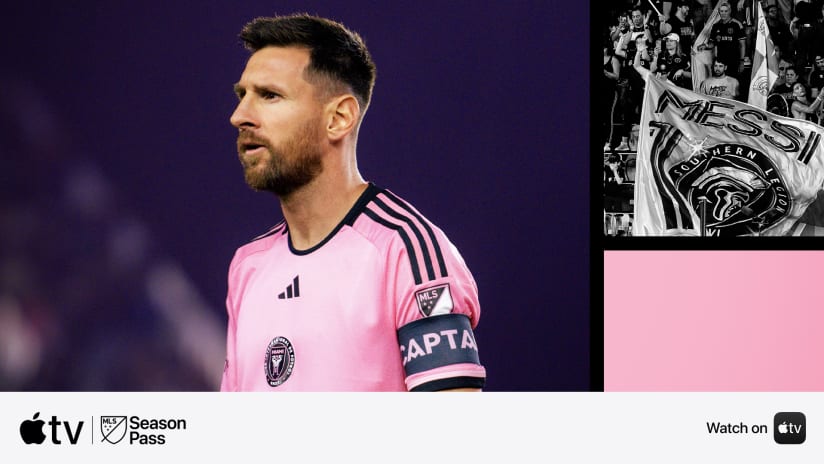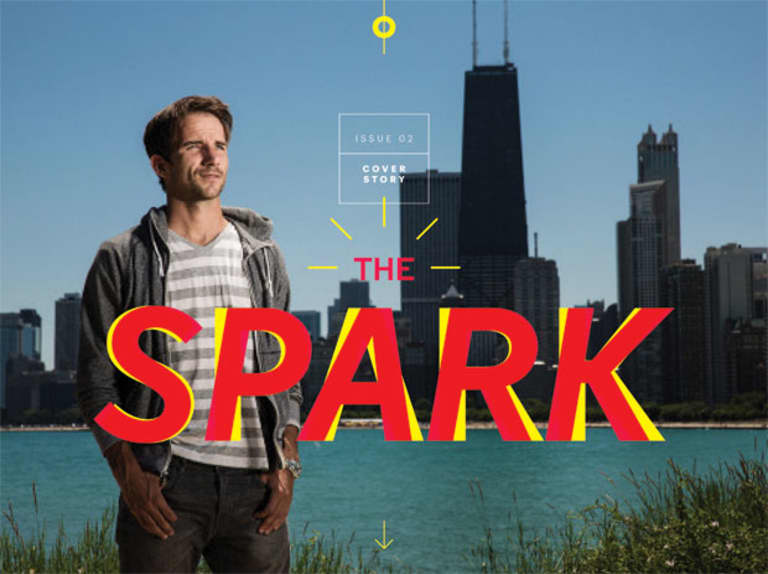
This article originally appeared in Overlap, a digital soccer magazine from the editors of MLSsoccer.com and Howler Magazine.
This was the Chicago Fire that fans had gotten used to during the first few months of the season—going down a goal to a severely undermanned San Jose, then with 18 minutes left in the game, blowing the 2–1 lead the team had somehow clawed back. In the final minutes, the Fire sent four shots toward the Earthquakes’ goal. Each one seemed like it had a better chance than the last, but none of them was good enough.
In the 84th minute, Chicago’s Mike Magee received the ball about 40 yards out from goal, turned, and dribbled it to the edge of San Jose’s penalty area. He brought his left foot back as if preparing to shoot, then slid a perfectly weighted pass toward the far post, through the splayed legs of Earthquakes midfielder Sam Cronin and directly into the path of a streaking Chris Rolfe, the other Fire striker. Rolfe finished it from close range for the winning goal.
It was Rolfe’s goal, but Magee’s creation. The July 3rd game was Magee’s eighth since joining the Fire in late May and the first in which he didn’t score a goal of his own. It was Chicago’s fourth win in five matches. The team had not lost since his arrival. Having sunk to the bottom of the Eastern Conference standings, the Fire now looked like a plausible playoff contender.
Chicago was dominant in its first seasons in Major League Soccer, winning the MLS Cup in 1998 and the U.S. Open Cup three times in five years, but the team has endured many more struggles than successes in recent years. Last season, the Fire reached the playoffs for the first time since 2009, but whatever glimmer of hope remained after that improvement was promptly snuffed out at the start of this season. Injuries forced top defender Arne Friedrich to retire, and at the other end of the field, the team proved woefully inept at scoring goals. Toyota Field, the Fire’s suburban Chicago home, had become a reliably doleful setting, with the only consistent roar coming from the inbound Southwest Airlines jets descending into nearby Midway Airport.
Meanwhile, over on the west coast, Magee was enjoying the best season of his career with the LA Galaxy, which was coming off back-to-back MLS championships. With Landon Donovan on sabbatical, Magee was given a chance at forward. He has always thought of himself as a forward, even though he has usually played in the midfield as a professional. In the new role and with the extra responsibility, Magee took Player of the Month honors in March after registering a hat trick in LA’s home opener—against the Fire, no less.
“First and foremost, I didn’t have any intention of leaving LA,” Magee says to me a few days before the San Jose game. “I thought that as long as I am playing, I am going to play for the LA Galaxy. They are the team that revived my career.”
But now he’s here, sitting in a downtown Chicago Starbucks not far from where his parents live, with a Cubs hat pulled snug over his hair. He and his girlfriend, Kristin, and their three- year-old daughter, Kiera, have been crashing with his parents while they are waiting for their house to sell in California. The Magees hosted a big family barbecue the night before. It’s the first time Mike has lived in Chicago since he was 16, when he left home and high school to spend two years at the U.S. Soccer Residency Program in Bradenton, Florida.
WATCH: Chicago Fire vs. Sporting KC, Friday, 8:30 pm ET, on NBCSN
Magee was born in Chicago and his family moved to the suburb of Elmhurst when he started kindergarten. He grew up with sports. His mother, Mary, is an avid horseback rider. His father, also Mike, received a scholarship to play football at Eastern Illinois, but suffered a career-ending injury while in college. Magee’s sister, Michelle, his only sibling lettered in soccer at DePaul University. A cousin, Michael Santacaterina, is a linebacker for Northern Illinois University, which lost to Florida State in this year’s Orange Bowl, and another cousin, Matt Wheatland, was selected eighth overall by the Detroit Tigers in the 2000 Major League Baseball draft. Magee also took passionately to baseball in his youth, but asserted himself as a soccer talent when he started playing club ball for the Chicago Sockers, the preeminent program in Illinois.
Also playing for that club, on a team a few years younger, was Michael Bradley, the U.S. national team and A.S. Roma midfielder, whose father, Bob, was then the head coach of the Fire. The elder Bradley would occasionally help out with the Sockers and kept tabs on the program’s up-and-comers. He noticed Magee—never the quickest player on the field, but a youngster with a knack for positioning and timing.
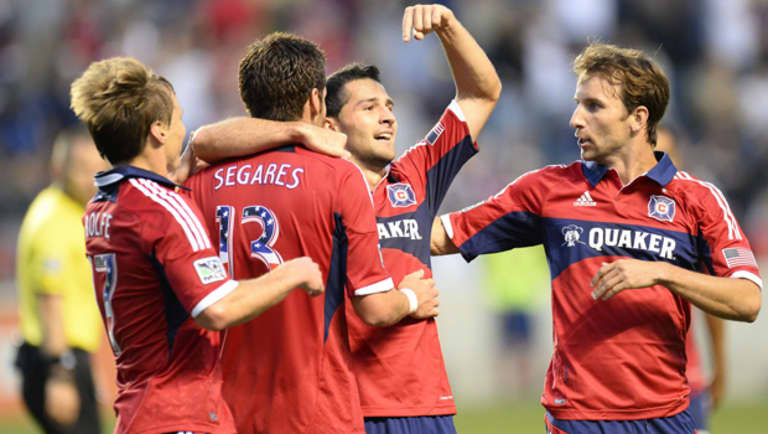
“Mike does a really good job of fitting into a team,” says David Richardson, the Sockers president. “If you go back and look at where he has played—he has played outside, in the midfield, and up top. He is a goal scorer, but a lot of times coaches don’t see him as a forward because is not the fastest guy. But he puts the ball into the back of the net.”
Bradley took a liking to Magee’s game, and in 2000 helped him land a spot in the Bradenton residency program, where he played alongside Eddie Johnson, Santino Quaranta and Justin Mapp. Magee never gave much thought to playing college ball—he says his parents never put pressure on him to land a scholarship—and instead set his sights on the pros. After residency, he had an open-ended tryout with Dutch juggernaut Ajax, but when they didn’t offer him a first-team contract, he decided to enter the 2003 MLS draft. Bradley, who was by now head coach of the New York/New Jersey MetroStars, selected the 19-year-old Magee fourth overall.
“There are a lot of guys who don’t get breaks, and I feel I owe a lot to him,” Magee says of Bradley. “Even when I didn’t know what was going on, he was believing in me.”
Magee repaid the faith immediately, scoring seven goals as a rookie in 2003. But the MetroStars—rebranded as the Red Bulls in 2006—were thereafter in a permanent state of tumult. Bradley was fired in 2005, the first of three coaching changes in the course of two seasons. (He would go on to manage the U.S. men’s national team for five years, and since 2011 has been at the helm of the Egyptian national team.)
Bradley’s ouster ultimately paved the way for Bruce Arena to take over as coach of the Red Bulls in 2006. But in Arena’s first game on the sidelines, Magee made a play for a ball in the air that nearly cost him his career. His toe got hitched on the hip of goalkeeper Troy Perkins, twisting his leg and tearing his MCL. Initially, the injury was misdiagnosed as a ligament sprain, but later tests revealed more serious damage. It took almost a year before doctors performed reconstructive MCL surgery, using a graft from his groin. Magee would have a second surgery a year after that, but the recovery proved slow and demoralizing.
Download Overlap 02 for iPad » | Download Overlap 02 for Android tablet »
“Not to be dramatic, but I was done with rehab,” he says. In limited playing time at the end of the 2009 season, Magee felt like a shell of his former self, and prepared for retirement. Chicago was the only destination that held any appeal, and only in a last-hurrah kind of way.
“Mentally, I was done,” he says. “I had to go home or nothing.”
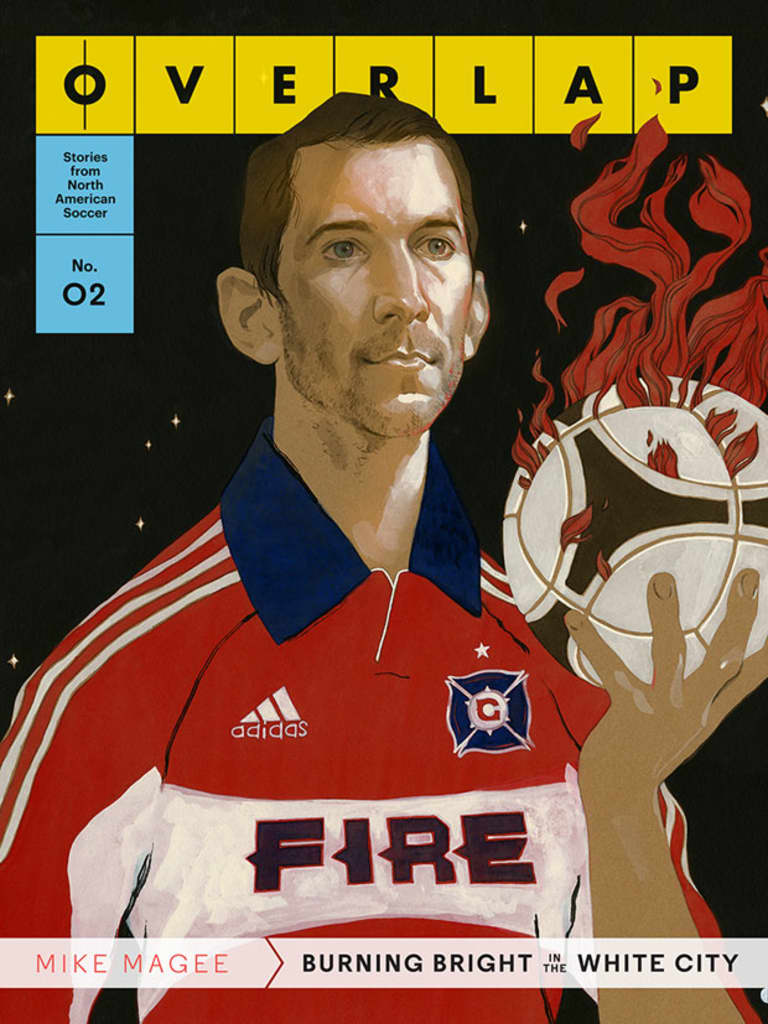
Magee was willing to take a pay cut in order to make this happen, but the team wasn’t interested in trading for him. After the season, a disheartened, still-hobbled Magee made clear that he would not return to New York—“It really didn’t end on great terms,” he says.
Arena was by now coaching the Galaxy, and he got Magee from New York for the price of a second-round draft pick. Though Magee’s health remained in question, he says Arena told him his energetic presence was value enough. The star-studded Galaxy offered an entirely different level of professionalism than he had ever experienced, not to mention a first-class training staff and a heady whiff of celebrity provided by his new teammates, including Landon Donovan and David Beckham.
“Everybody was so demanding of one another,” Magee says. “And everyone was held accountable. I felt when I was in New York guys were just going out and just kind of wanted the season to end. Some guys wouldn’t necessarily want to train on some days. But when we were in LA, you had to work every day and be a good teammate. If guys making millions of dollars weren’t looking for excuses, then neither could I—and it was contagious.”
Magee’s play progressed steadily in Los Angeles. That first year, he scored two playoff goals, helping the team reach the MLS Cup Final. He says it took a couple of years for him to fully shed the psychological baggage that accompanies a career-threatening knee injury. But over that time, he went about burnishing his reputation as one of the league’s top scorers in the clutch.
“I tend to think I have a pretty good soccer brain,” he says when I ask him to describe his play. “And although I am quicker than I think I look on tape, I have always just popped up in good spots.”
The start of this season saw him emerge as one of the top scorers, period. In his first 10 appearances, he tallied six goals, surpassing his scoring total of every season but his rookie campaign. That’s when Chicago came calling.
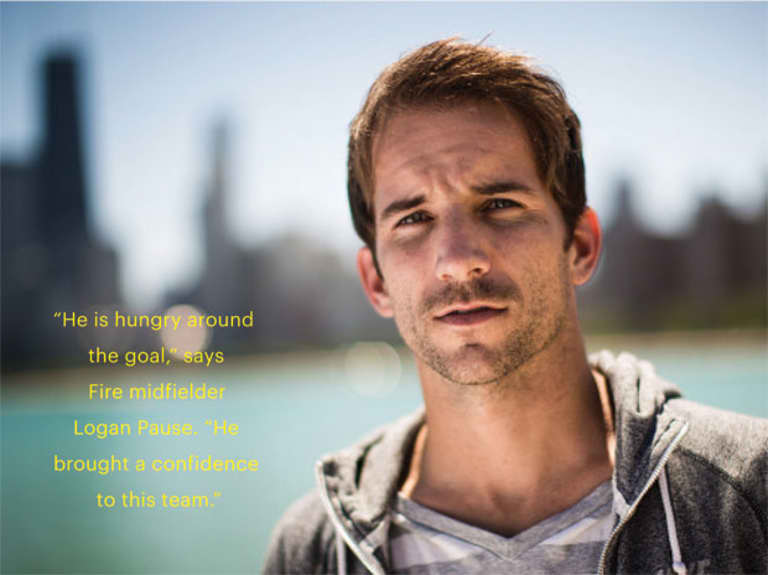
THE SEQUENCE OF EVENTS THAT BROUGHT MIKE MAGEE BACK TO HIS hometown of Chicago is complicated. Until he played so well for the Fire, Magee was more of a footnote in someone else’s story. That person is Robbie Rogers, a former NCAA champion at Maryland and occasional national team player who had spent four seasons with the Columbus Crew before heading to Leeds United, in England’s Championship, where his playing time was limited by an ankle injury. In February, Rogers made international news when he announced that he was gay—then retired.
A week and a half before this news, Chicago had dealt go-to striker Dominic Oduro to Columbus in exchange for Dilly Duka, the Crew’s promising but temperamental 23-year-old winger, and the rights to Rogers, who promptly tweeted his displeasure with the deal. Then the season started: Oduro came out on fire; the Fire came out sputtering; and Rogers came out. A month after Rogers’s retirement announcement, he changed his mind, saying that he’d like to return to MLS and become the first openly gay male athlete to play in a major American pro sports league, but only if he could play for LA, his hometown team.
“I was getting texts from guys asking if I was going to be traded to Chicago,” Magee tells me at the Starbucks. “And I kept saying, ‘No, Bruce wouldn’t trade me.’”

The Fire had made some past trade inquiries to the Galaxy about Magee, according to Fire president Javier Leon, but they never went anywhere. Now, Arena agreed to broach the prospect of a return home with a player he had rescued.
“It is very difficult to claim you are smart,” Leon says about the trade. “You are going to get some that are right and some that won’t work out.”
This one worked out. Once in Chicago, Magee set about creating his own intriguing storyline, embarking on a career-best scoring streak and leading the league in goals by the end of June. On the day of the San Jose game, he was again named MLS Player of the Month. A few days after that, he was named to the MLS All-Star team for the first time in his 11-year career.
Aside from a sure foot and a marketable prodigal son story, Magee brought a heavy helping of swagger to an anemic Chicago squad. “He is a guy we needed, a guy that has a little personality on the field,” says Fire assistant coach Mike Makovich, who has followed Magee since his teens.
In the game following the San Jose win, Chicago lost to Kansas City 2–1 in a match that ended its unbeaten streak. After the final whistle, Magee was smoldering, calling out his teammates’ second-half effort, saying the team played like “shit,” that the performance made him “sick.” It was a spark that had been missing.
“The wealth of experience and knowledge he brought with him was just immense,” says Fire midfielder Logan Pause. “Couple that with the fact that he is hungry around the goal—and at the time we were struggling to score goals. He brought a confidence to this team.”
The trade was a massive success for Chicago, but it could have worked out very differently. The Fire had given up two valuable players to acquire rights to Rogers. Leon could ill-afford to call it all a wash, but neither was he about to stand in the way of a symbolic moment in the history of gay rights. How to get fair-market value when you have so little leverage?
“The key component was there had to be a desire from the player to come to Chicago,” Leon told me. “Because at that moment in time, the Galaxy were not interested in parting ways with a player, whether it was Mike or another, that was making a big contribution to their success.”
Magee had certainly developed into a key part of LA’s attack, but he was still a distant star on a team that had Landon Donovan and Robbie Keane. Despite Bradley’s patronage and his time in residency, Magee has still never been capped by the U.S. national team.
“It was not easy,” Magee says, “not easy at all.” He chewed it over for several days before finally okaying the deal. If nothing else, he thought, it would be nice for his daughter to grow up around family. When the papers were signed, Magee didn’t even wait for the Fire to coordinate his travel back to Chicago; he went online, booked a flight, and was airborne a few hours later.
Download Overlap 02 for iPad » | Download Overlap 02 for Android tablet »

